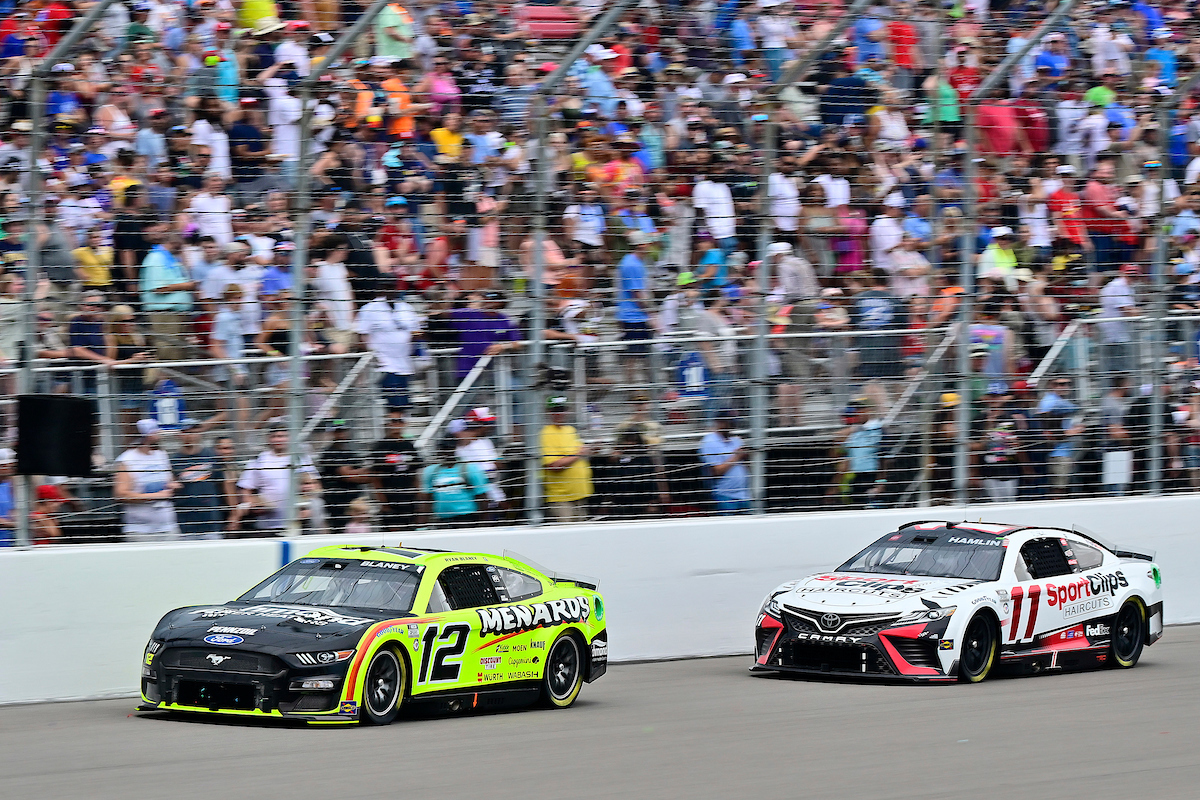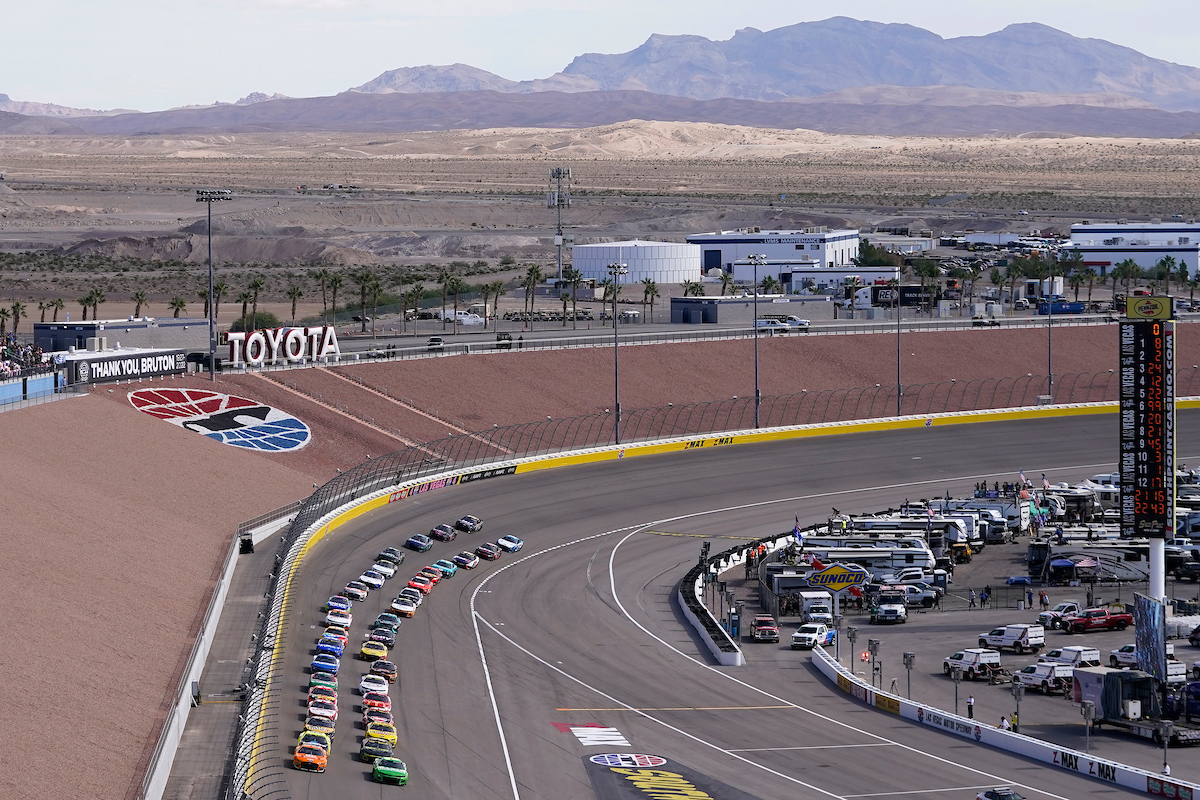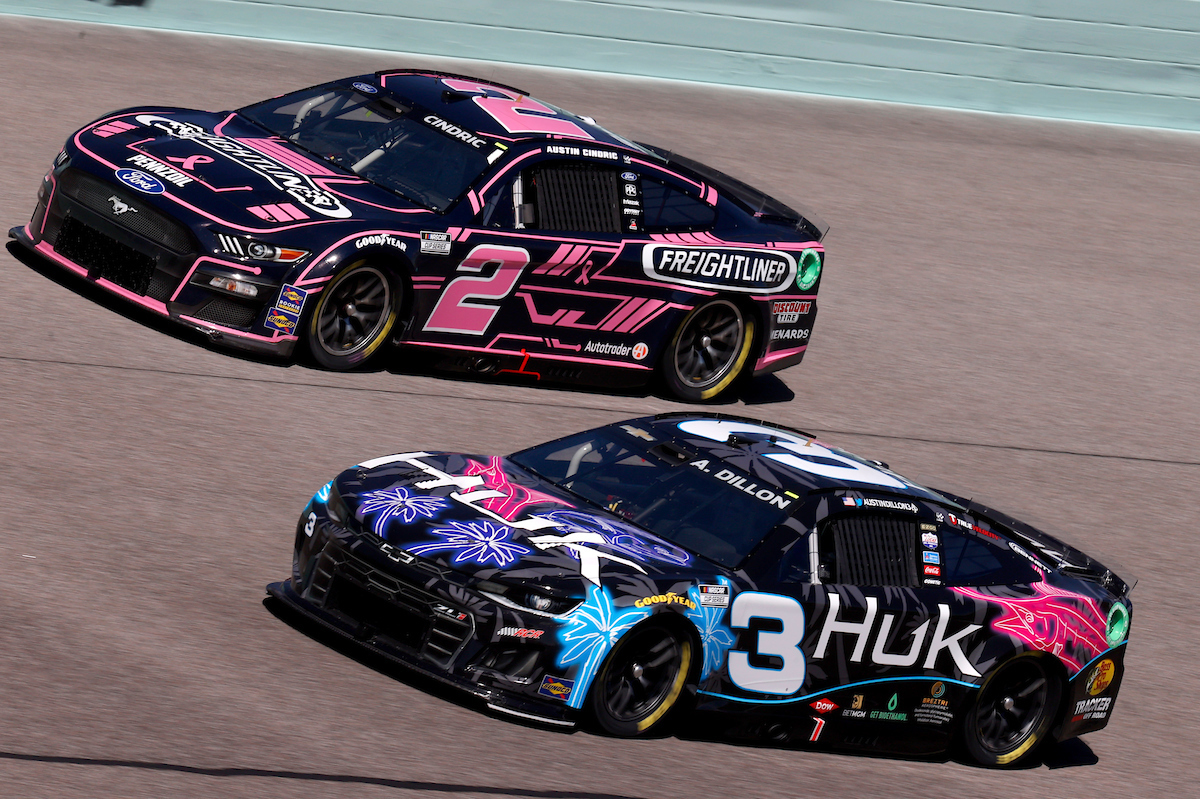What are NASCAR tires filled with?
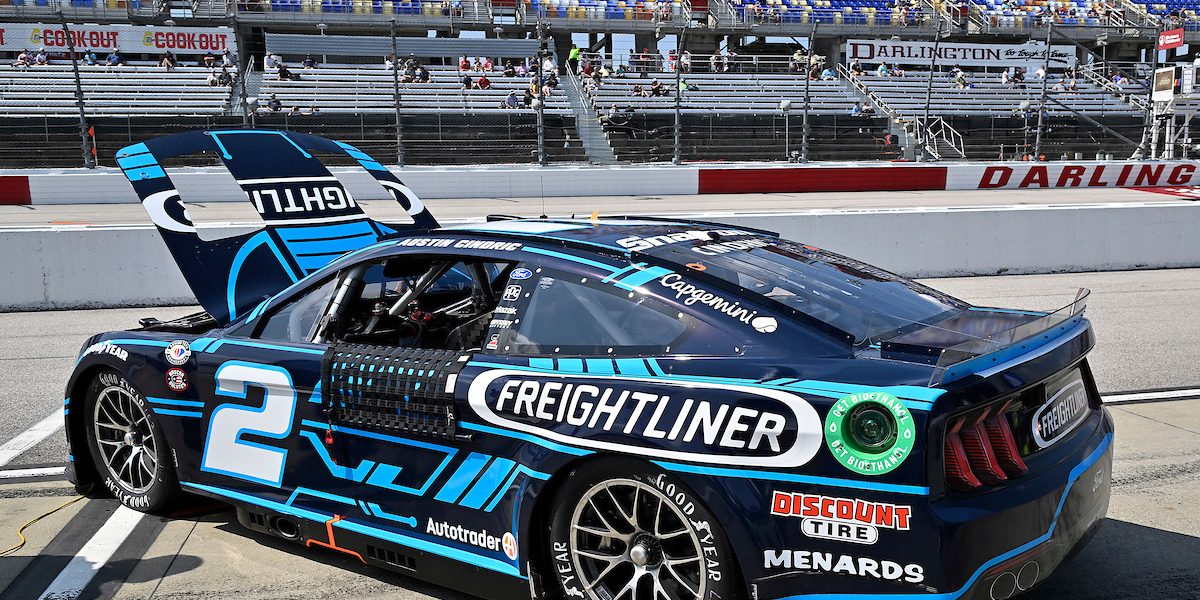
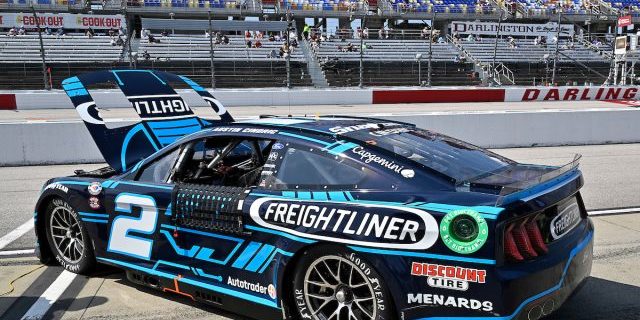
Have you ever wondered what exactly NASCAR tires are filled with? The answer might surprise you. Unlike the tires on your average passenger vehicle, NASCAR tires are not filled with air. Instead, they are filled with nitrogen gas. This might seem like a small detail, but it actually has a significant impact on the performance of the tires.
Nitrogen is a naturally occurring gas that is commonly used in a variety of industrial applications, including tire inflation. Unlike air, which contains a mixture of gases such as oxygen, nitrogen, and water vapor, pure nitrogen is completely dry and does not expand or contract in response to changes in temperature. This means that NASCAR teams can precisely control the pressure in their tires, which is essential for maintaining optimal handling and grip on the track.
In this article, we’ll take a closer look at the science behind NASCAR tires and explore why nitrogen is the preferred choice for professional racing teams. We’ll also delve into some of the other factors that contribute to tire performance, such as tread design, compound selection, and temperature management. So buckle up and get ready to learn everything you ever wanted to know about NASCAR tires!
Table of Contents
What are NASCAR tires made of?
NASCAR Tire Composition and Materials
NASCAR tires are engineered with unique materials to perform at maximum speed, acceleration, and handling. The tire structure is carefully crafted with different layers of rubber, steel belts, and durable fabrics.
Components of a NASCAR Tire:
A table showcasing the composition of a NASCAR tire:
| Component | Material Used |
|---|---|
| Tread | Customized Rubber Compound |
| Carcass | Strengthened Cotton and Steel Cord |
| Bead Bundle | Kevlar and Rubber |
| Sidewall | Rubber & Reinforced Polyester Bands |
| Inner Liner | Halobutyl Rubber |
| Belt Package | High-Tensile Steel, Gum Strip, and Rubber Compound |
Other Key Details about NASCAR Tires:
NASCAR Tires are optimized to enhance racing performance and can sustain extreme pressure and temperature throughout the race. These tires are also carefully chosen based on a variety of factors, including track surface, temperature, and humidity.
NASCAR Tire History:
NASCAR has been experimenting with tire compounds since its inception in 1948. However, it was not until the 1990s that NASCAR tires were fully customized to match the specific racing tracks and conditions. Since then, tire manufacturers have worked closely with NASCAR teams to develop new and innovative tire technologies.
Tread
The part of the NASCAR tire that touches the road is called the contact patch. It’s covered with tread made of special compounds. Natural and synthetic rubber plus additives make up the tread and affect traction and heat control. The tread design is also important for race performance.
Testing the tread compound is key to ensure perfect performance on the track. Compound choices depend on track surface, temperature and humidity. Different compounds are used for different parts of the tire for better handling and durability.
NASCAR tires don’t have a wear indicator like regular tires. Instead, teams use color changes and measure depth to know when to change tires during a race.
Bead Bundle
Do you know about Bead Cluster? It’s a key part of NASCAR tires that keeps them stable while driving. Here are 6 things to know about it:
- The Bead Cluster is made up of several steel wires which go around the tire’s inner edge.
- These wires give the tire a secure hold on the racing wheel.
- The cluster also prevents too much rotation when you turn quickly.
- The number and thickness of the wires depend on the tire’s size, design and use.
- NASCAR teams often tweak their Bead Clusters for different track conditions.
- If you don’t install it right or it gets damaged, it can be dangerous.
Also, the material of the Bead Cluster is essential in getting the right grip and traction for a race car.
Inner Liner
The Inner Casing is the lining material inside NASCAR tires. It plays a key role in tire performance and durability. To help understand it, here’s a table detailing the materials:
| Layer | Material |
|---|---|
| First | Synthetic rubber compound |
| Second | Kevlar fiber |
| Third | Steel wire cable |
| Fourth | Nylon ply |
Each layer helps maintain tire shape, heat resistance, and puncture protection. This blend of materials makes for high-performance racing tires.
Not all NASCAR tires have inner casings. Some teams prefer single-ply tires. They are lighter and provide more grip for short races. But they wear out faster than multi-ply inner-cased tires.
Fun fact: Fritz Hofmann created the first synthetic rubber in 1909. He was granted the German Patent “Caouthchouc-Ersatz” (rubber substitute) in 1910.
Carcass
A NASCAR tire’s inner structure is made up of several materials. The innermost layer, the ‘Carcass’, is composed of braided steel wire and rubber, with added layers of nylon cords for extra stability.
Plus, other layers are essential for performance. Bead bundles and sidewall inserts offer increased steadiness when cornering, while the tread design ensures maximum grip on the track. All these components blend together to give drivers the handle and speed they need for races.
It’s vital to remember that NASCAR regulations demand precise tire formulas for each race. Teams must therefore pick the right tires depending on track conditions, weather forecasts, and other elements. Failure to do this properly can lead to loss of precious seconds or even a spin out.
Belt Package
Constructing a NASCAR tire involves multiple components, one of them being the Belt Package. This layer of belts, made up of steel and synthetic fibers, resides below the tire’s tread. It provides extra support and durability when racing.
Five key points to note about the Belt Package:
- Up to six layers of belts can be used.
- The angle and spacing of the belts are adjustable.
- The tension applied when installing affects handling.
- A well-fitted Belt Package guards against flats and blowouts.
- Poorly aligned or worn Belts reduce traction and speed.
For optimal performance, all components must be working effectively. Alignment and tire maintenance are critical for superior performance.
What are NASCAR tires filled with?
NASCAR Tire Inflation – What Goes into Them?
NASCAR tires are filled with a specialized blend of air and nitrogen. This combination provides a more stable and consistent inflation pressure, which is crucial for high-speed racing. Nitrogen is preferred over regular ambient air because it has a lower moisture content and higher purity.
The blend and pressure used in NASCAR tires depend on various factors, such as track temperature and ambient conditions. It is crucial to release some of the air and nitrogen to keep the tires from getting too hard as their temperature increases during the race.
It is essential to keep the tires well-maintained and checked regularly to ensure that they remain in optimal condition for peak performance. IGNORING routine maintenance can result in tire failures and even catastrophic accidents.
Nitrogen vs. regular air
The battle between Nitrogen and Regular Air for NASCAR tires is a hotly debated topic! Let’s look at the differences between the two in the table below.
| Aspect | Nitrogen | Regular Air |
|---|---|---|
| Purity | 95-99.9% | 78% |
| Molecule Size | Larger | Smaller |
| Temp Change Resistance | More stable | Inconsistent |
| Pressure | Higher | Fluctuates frequently |
Nitrogen has higher purity levels than regular air and its larger molecules help maintain consistent tire pressure. But, it’s more costly and requires specialized equipment. Regular air is cheaper and accessible, but doesn’t match nitrogen’s purity levels.
It’s important to properly prepare tires before using either gas type. Proper venting techniques eliminate old gas particles for optimal performance.
Experts remain inconclusive on which approach is superior. Even Mark Martin and Dale Earnhardt Jr.’s race showed this – Mark had a flat tire due to low air pressure, but nitrogen couldn’t save him from losing the race.
Benefits of using nitrogen in tires
NASCAR vehicles use nitrogen, instead of regular air, to fill their tires. This provides many benefits, like better tire performance and increased safety. Nitrogen is a stable gas, which won’t expand or contract with temperature changes. This lowers the risk of blowouts and helps keep consistent tire pressure.
Plus, nitrogen wards off oxygen corrosion, preserving the tires for longer. It also reduces moisture inside the tire, cutting down on rust and wear. Nitrogen can also lead to improved fuel efficiency, as properly-inflated tires reduce rolling resistance.
In 2008, Dale Earnhardt Jr. won two races because his team changed from regular-air-filled tires to nitrogen-filled ones. This gave Dale consistent handling during the race, leading him to victory. Now, anyone can get the same advantage from nitrogen-filled tires!
How the tires are filled with nitrogen
When discussing NASCAR tires, nitrogen gas is a popular choice. It contains less water vapor and can handle higher pressure compared to compressed air. So, how do the tires get filled with nitrogen? Here’s the steps:
- Take out the tires from the race car.
- Remove the valve core from each tire.
- Introduce nitrogen gas into each tire by a machine that removes all air.
- Reinstall and secure the valve cores.
Not all NASCAR teams use nitrogen-filled tires due to disagreements about its advantages.
Extra details about NASCAR tires state that they are tested rigorously before each race to make sure safety standards are met, such as tire pressure, tread depth, and chemical composition.
Fun Fact: According to Goodyear, who has been an official partner of NASCAR since 1954, around 1200 racing tires are used in every NASCAR race weekend.
Conclusion: Importance of proper tire maintenance in NASCAR.
In NASCAR, tires must be well-maintained for optimum performance. If neglected, it can cause safety issues and a poor driving experience, impacting the driver’s skills and strategies. NASCAR tires are inflated with nitrogen to prevent moisture build-up. This helps drivers stay in control during high-speed turns and quick accelerations.
Tire maintenance includes checking for cracks or punctures, rotating, balancing and replacing them when needed. Teams keep an eye on the wear patterns on all four tires to ensure uniform performance.
History has shown us how important tire maintenance is to winning. An example of not maintaining them was Jeff Gordon’s 2007 incident at Atlanta Motor Speedway. This led to serious crashes and hurt other drivers.
It is essential to recognize that proper tire maintenance is a must in NASCAR racing. Teams must prioritize this aspect to ensure maximum efficiency during the races and to ensure safe driving.
What are NASCAR tires filled with? – Frequently Asked Questions
Q: What type of tires are used in NASCAR?
A: NASCAR uses slick, treadless tires that are specifically designed to provide maximum traction and grip on the track.
Q: How are NASCAR tires different from regular tires?
A: The tires used in NASCAR are significantly different from regular tires. They are made of a softer rubber compound that provides better grip on the track. Additionally, NASCAR tires are much larger than regular tires and do not have any tread.
Q: How are NASCAR tires inflated?
A: NASCAR tires are filled with nitrogen instead of compressed air. Nitrogen helps to maintain consistent tire pressure over a wide temperature range, which is particularly important in the high-speed, high-performance environment of NASCAR racing.
Q: What happens when a NASCAR tire loses pressure?
A: If a NASCAR tire loses pressure during a race, the driver must pit and the tire will be changed. NASCAR rules dictate that only new, unaltered tires can be used during a race, which means that a driver cannot continue on a damaged tire.
Q: How do NASCAR teams select tires for a race?
A: NASCAR teams will typically select tires based on the track conditions and the anticipated weather. They will also take into account factors such as the car’s handling and the driver’s preferences. Once the tires have been selected, they will be inspected and mounted on the car prior to the start of the race.






